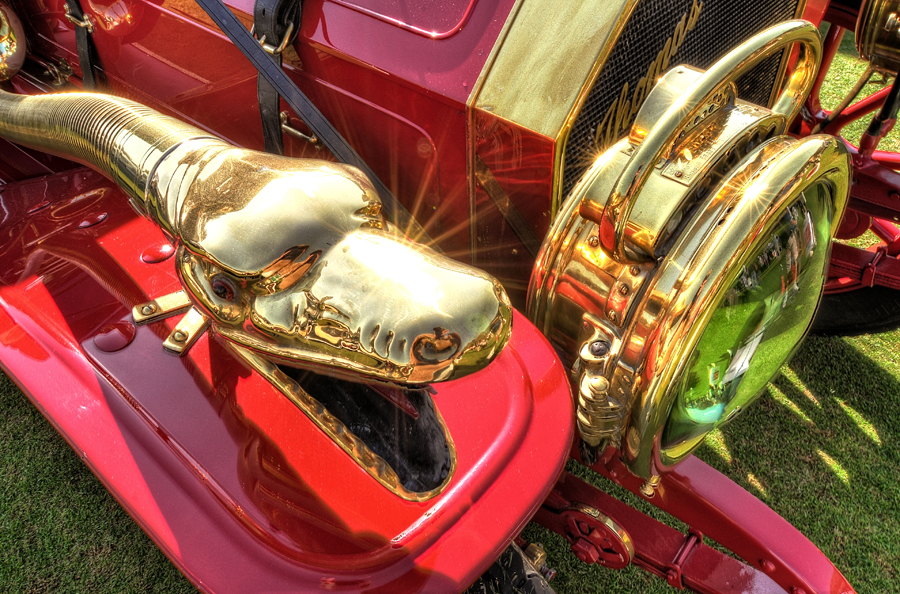
This is the same model of Thomas Flyer that participated in, and won, the 1908 New York to Paris Race. These cars are powered by a 6-cylinder, 73 horsepower engine.
Production of the Thomas Flyer peaked in 1906 and fell to only 913 units in 1910 when staff salaries were reduced. E.R. Thomas himself never learned to drive a car, sold his interest in the company. The new company was too late to save Thomas and went into receivership on August 29, 1912.
Taken at the 2013 Amelia Island Concours d'Elegance.
You may purchase a print in our dElegance 2013 ![]() online gallery.
online gallery.
The Vintage Automobile Blog Index



